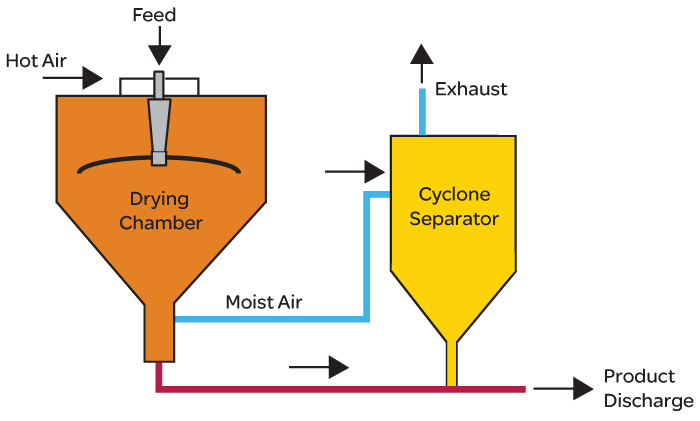Mixers
Table of Contents
What are Mixers
Mixers are vessels with perform the act of mixing. Mixing can be defined as the process of combining two heterogeneous materials into one homogenous product. This can be done in either a batch or continuous process (see Reactors). Batch mixers are usually used for smaller scale productions, and continuous mixers are normally used for larger-scale industrial applications [1].
Design Considerations
Some aspects to consider while choosing a mixer are the type of mixing which must be achieved (see below), the mixing temperature and possible need of a coolant system, and the presence of a catalyst.
Types of Mixing
There are 6 types of mixing, which are the different mixing type between the three states of matter, solid, liquid, and gas. The type of mixing determines the design requirements for the mixer and the type of mixer that needs to be used. Additionally, these can be split up into static and power mixing.
Static Mixing
Static mixing is the process of mixing fluids using a specialized Static mixer, which does require any power or moving parts, but relies solely on the geometry of the mixer, and the properties of fluids such as gasses and liquids [2]. This process is only used for these three types of mixing, as any solid material can clog the mixer. However, these mixing methods are not necessarily required to use a static mixer, as some older methods still use power mixing methods.
| Image of a Helical Static Mixer [3] |
|---|
Liquid-liquid mixing
Liquid-liquid mixing is one of the most common forms of mixing, and can be found used in all places from local bakeries to oil and gas refineries. A common liquid-liquid mixer is an agitator inside of some kind of tank [1], or a helical static mixer.
| An example of an Agitator inside of a Tank |
|---|
Gas-gas mixing
Gas-gas mixing is a very simple to perform process, as gases mix very easily together, and can usually just be combined in a vessel together, such as a pipe or tank.
| Diagram of a Gas Mixer [5] |
|---|
Liquid-gas mixing
Liquid-gas mixing is usually the process of dissolving a gas into a liquid. An example of this is the carbonation of a soft-drink.
Power Mixing
These mixing methods are methods which cannot be accomplished without any added force or moving pieces.
Solid-solid mixing
Solid-solid mixing is usually achieved by kneading the two solids together, usually in a dust or paste form.
| Example of a Kneader [1] |
|---|
Liquid-solid mixing
Liquid-solid mixing has the goal of suspending the solid in the liquid. An example of this is concrete, which is a mixture of sand, small rocks, water, and cement.
| Example of an Extruder [1] |
|---|
Solid-gas mixing
Solid-gas mixing can be used in various cases, or can sometimes be a side effect of other processes, such as Dryers, namely Direct Drying, which suspends tiny particles of dirt in the air stream during the drying process. The dirt particles are then removed using cyclone.
| Diagram of a Direct Dryer and a Cyclone Separator [6] |



